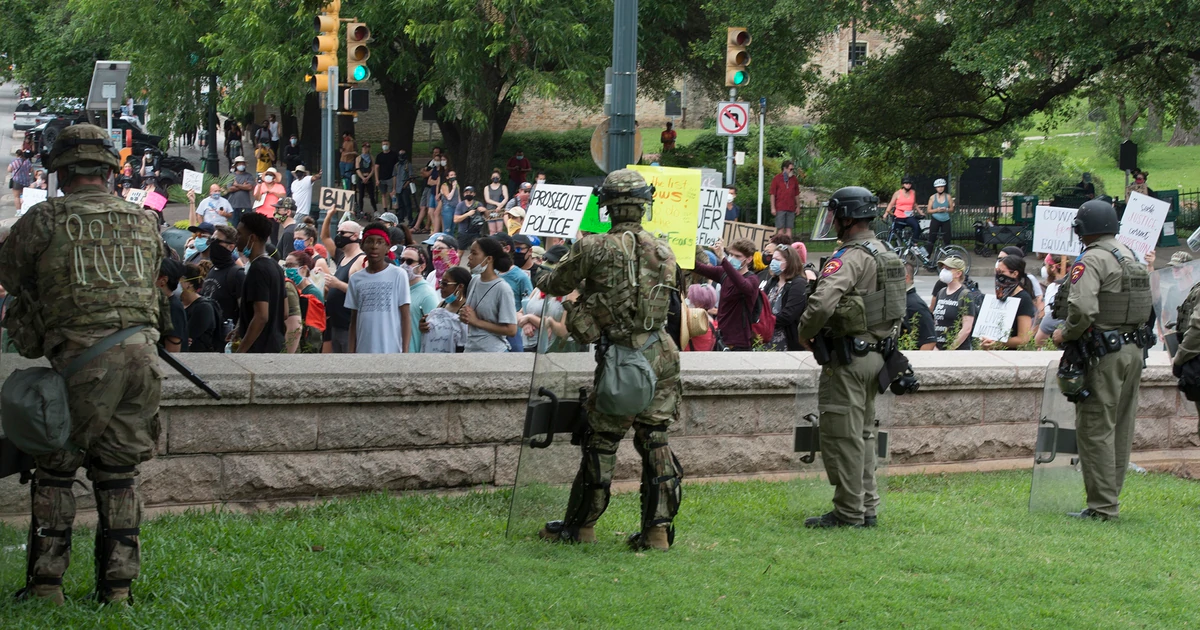
Brown University released a study Wednesday examining the correlation between U.S. military conflicts in the post-9/11 era and an increase in police militarization.
The study revisits the notion of the military-industrial complex and its profit-driven agenda at the expense of civilian casualties in the U.S. and abroad. It draws a parallel between the military’s efforts to squash jihadis overseas and police agencies’ increasing role in countering domestic terrorism.
“Police departments raced to develop counterterror systems; meanwhile, the scale and profits of military-industrial corporations mushroomed as the U.S. invaded Afghanistan and then Iraq,” the study’s author, Jessica Katzenstein, wrote. “These forces converged with the growth of specialized police training and tactics to combat the rising number of mass shootings, and with more recent military drawdowns from active war zones, to vastly inflate an existing pipeline from the military and the federal government to local police.”
Not only were military weapons manufacturers courting police agencies directly, the study claims, but a secondary market for surplus military equipment was created during the Bill Clinton administration in the Defense Logistics Agency’s “1033 Program.” Its effects can likely be seen recently on city streets during protests in the form of MRAPs, or mine-resistant ambush protected armored vehicles.
As of June, there were about 8,200 federal, state and local law enforcement agencies participating in the program, according to DLA.
Many of the protests prompted a more than local response, with the National Guard and Homeland Security stepping in. As a result, the public is often confused as to who is showing up to keep the peace
National Guard troops on North Carolina streets during protests
Origins of militarized police
Police use of military tactics has roots in the Los Angeles Police Department’s Special Weapons and Tactics unit, or SWAT, developed and formalized in the 1960s.
Following the August 1965 Watts Riots, there were several incidents of criminal snipers taking shots at civilians and police officers. Special teams of highly-trained officers, many of whom were recruited because of past military experience, were formed to handle the sniper shootings. SWAT units were subsequently used to tackle a number of challenging situations from bank robberies to, more recently, school shootings.
Then-President Barack Obama’s 2015 Executive Order 13688 took another look at the 1033 program and added restrictions on the types of items allowable for transfer, to include grenade launchers and military aircraft. In 2017, President Donald Trump revoked Obama’s order.
Mission creep
The 1033 program saw some $1.6 billion in equipment transferred to law enforcement agencies since 9/11 and only $27 million before the terrorist attacks, according to the study. But according to the Law Enforcement Support Office, approximately $7.4 billion worth of equipment has been procured by law enforcement.
For all the criticism local law enforcement agencies have received over the years for participating in the federal government hand-me-down program, some of the equipment is being used outside of crowd-control and riot response.
In addition to innocuous items like office equipment, LAPD recently acquired three flatbed trucks to help move supplies in its COVID-19 response.
But big cities aren’t the only ones taking part. In 2014, for instance, the town of Dundee, Michigan, population 3,900, received $2.7 million worth of military surplus equipment, which included an armored MRAP vehicle.
So, does a well-equipped police force do more harm than good?
A 2017 American Economic Journal study claims the military aid is cost-effective and helps to reduce street crime by acting as a deterrent. Conversely, the Brown study argues the use of military equipment emboldens officers, many of whom are hired increasingly for their military background more than ever before.


Be the first to comment